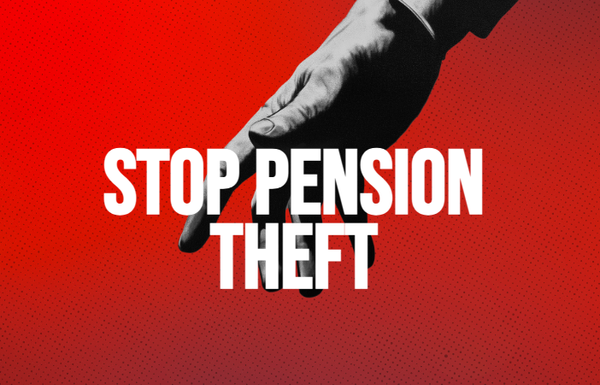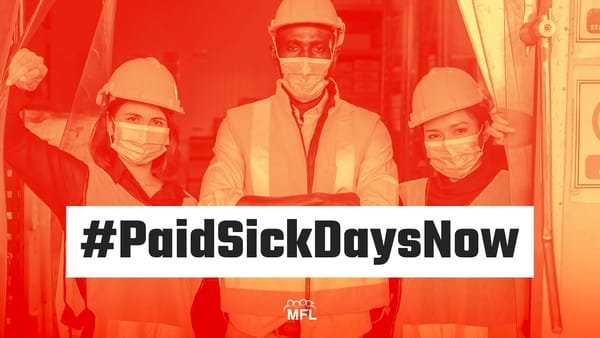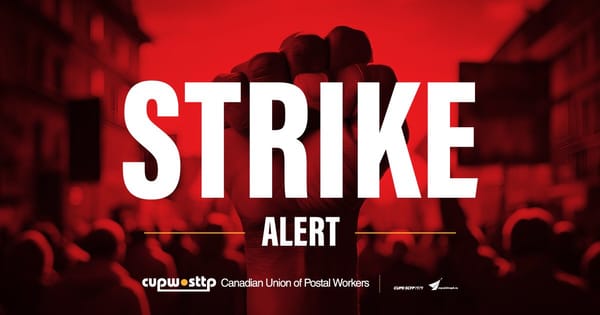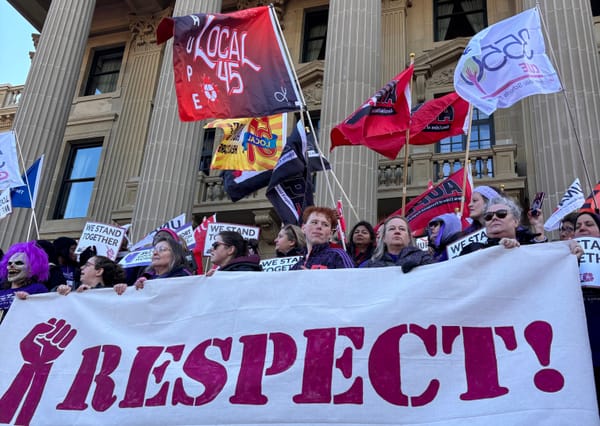
In a recent decision, the Supreme Court of Canada (SCC) determined that denying low-level managers the right to unionize does not infringe their constitutional right to free association.
This long-awaited case is significant for several reasons.
First, it had the potential to re-open the question of where the line is drawn between managers and workers for the purposes of collective bargaining.
Second, it dealt with a complex yet important question concerning the test for determining a legislative infringement on freedom of association.
Last, through its reasoning, the Court raised questions about who is entitled to rights to organize and strike in a broader sense. Because the vast majority of private sector workers are not union members with a Charter-protected right to strike, this latter issue is of growing importance.
Additionally, there was some concern that had the SCC ruled in the manager association’s favour, the Court would be stepping on the autonomy and expertise of legislatures and labour boards to pass legislation and make determinations, respectively, concerning the scope of collective bargaining and the composition of union bargaining units. In this sense, the Court’s decision may also be viewed in a positive light.
The case in question — Société des casinos du Québec inc. v. Association des cadres de la Société des casinos du Québec — concerned a group of “first-level” managers at a Montreal casino who formed an association and sought to certify a union before Quebec’s Administrative Labour Tribunal in 2009.
The Association had organized such managers at four casinos run by the Société des casinos du Québec Inc., and had attempted to officially certify as a union bargaining agent at the Casino de Montréal under the Quebec Labour Code.
However, Quebec’s Code explicitly excludes managers from its labour relations framework, as do all other labour relations statutes in Canada.
The Association sought a ruling at the Tribunal that excluding their members from collective bargaining infringed their rights to free association under the Charter of Rights and Freedoms and the Quebec Charter of Human Rights and Freedoms. The Tribunal agreed. The Quebec Superior Court allowed an application for judicial review from the employer, which the Quebec Court of Appeal later overturned.
The Supreme Court found against the manager’s association. While the decision is perhaps not surprising, it may have important implications beyond the immediate issues of this case.
First, there is the question of excluding managers from unions.
Excluding those in managerial positions from collective bargaining is generally understood as beneficial to both employers and unions. Because managers represent the interests of employers in the workplace, keeping them out of union bargaining units is meant to prevent conflicts of interest and to preserve the autonomy of workers’ organizations. Collective bargaining is designed for two distinct sides — employees and bosses. Managers fall into the latter category.
Managers therefore have no legally protected right to organize, bargain or strike. They can, however, enter into voluntary bargaining arrangements with employers, which typically involve some form of consultation. But any agreements produced through such relationships are not collective agreements in the legal sense, and consequently lack mechanisms for enforcement or clarification. For example, managerial employees can’t file grievances at the labour board if they believe their employer is violating the terms of the agreement. This was the situation of the casino managers when they filed for union certification after the employer unilaterally changed their working conditions. The organization could only seek recourse in the courts, as the SCC notes in its decision.
With the Court’s rendering, there likely won’t be the resultant change in the labour law landscape that some expected when it comes to managerial unions. At the same time, the decision could have freedom of association implications for other workers.
But before we get there, there is the issue of the appropriate test for determining when an infringement of free association rights has taken place. In this case, the issue concerned whether the government was directly interfering with free association, or indirectly interfering with this right by excluding managers from collective bargaining legislation. The concern here was that workers making a “positive rights” claim (i.e., that the state must act to correct infringement rather than refrain from acting), would have to meet a higher legal threshold.
The Court clarified that the same test applies to positive and negative rights claims, and thus workers arguing that their rights to collectively bargain or strike have been violated would not be subject to different standards depending on the nature of the government intervention.
The Canadian Civil Liberties Association (CCLA), which was an intervenor in the case, noted that it is “pleased to see that the SCC re-affirmed that claimants who are excluded from collective bargaining regimes do not bear a separate and higher legal onus.” However, the CCLA also pointed out that the decision may still make it difficult for many claimants to “establish a breach of their associational rights.”
The labour movement did not take an overly public stance in this case, though some unions and the Canadian Labour Congress (CLC) support the right of low-level managers to unionize. For labour, protecting the test for determining government infringements on freedom of association, as set out in Dunmore v. Ontario (Attorney General), was also important. The CLC, for example, also had intervenor status in the case, and made a submission dealing specifically with this latter issue.
Thus, the Court applied the two-step test, which first asks if an association’s activities fall within a Charter provision, in this case freedom of association. The second step then involves determining whether a legislative exclusion “substantially interferes” with the protected activities of the association.
In the first instance, the SCC found that the manager’s association’s activities did fall within the scope of freedom of association. However, the Court also determined that the purpose of excluding managers from collective bargaining wasn’t to interfere with their association rights but rather to preserve the distinction between employees and management.
In other words, the right to freely associate doesn’t guarantee inclusion under a particular labour relations framework or statute.
As David Doorey argues, what is interesting about this is that, in making this determination, the Court relies on the fact that the Association had been representing the managers and voluntarily engaging with the employer for some time.
He writes: “This fact suggests that this was probably not the best case to bring to test the statutory exclusion of managers in Canadian labour statutes. A better case would involve an employer that ignored attempts by its managers to bargain collectively, or better yet, fired the managers for having the audacity to ask! Since the fired managers would not have the protections of the labour code’s unfair labour practice provisions, it would be a much easier case to prove a Section 2(d) infringement.”
In other words, the Court is saying that engagement between the managers and the employer shows freedom of association is not being “substantially interfered” with by exclusion from the labour code. Workers in a similar situation would thus need to demonstrate, perhaps through collective action, that their employer refuses to meaningfully engage with them. As Doorey notes, we’re seeing “baby steps” toward a right to strike for non-union workers.
Predictably, employers and their legal counsel welcomed the Court’s decision. Had the SCC ruled in the manager association’s favour, this might have led to a broadening of collective bargaining rights, an outcome most employers oppose. Additionally, the decision “makes it possible to avoid role conflicts between employer and employees,” as one firm put it. Such an outcome “ensures managers adequately represent the employer’s interests, and thus preserves the employer’s confidence in its representatives.” The Canadian Association of Counsel to Employers made similar arguments before the Court.
Although this particular case has concluded, whether or not low-level managers can unionize in all instances may not be entirely settled. The facts of future cases will matter when determining infringement of collective bargaining rights and appropriate remedies.
However, more broadly, what the case tells us about workers presently shut out of unionization may prove more interesting. On this front, many low-level managers have much in common with other workers.
The managers in this case work for a Crown Corporation with at least five levels of management. Their day-to-day activities likely look much more like workers than senior executives. And this is true for many managers and supervisors in other sectors. In fact, it’s not uncommon for employer to misclassify employees as managers to skirt employment laws — for example to avoid paying mandatory overtime.
In industries such as retail and food services, the working conditions of low-level managers and supervisors are often little better than those of employees. Precarious working conditions have spread not only across industries but also between job classifications. In certain cases, this has led some low-level managers to identify more with workers than their bosses. For instance, Starbucks managers and supervisors have quit over the company’s harsh response to worker organizing.
When it comes to those at the bottom of the managerial hierarchy, the crisp line between workers and management begins to look quite blurry. How long before we see others in so-called manager positions testing their rights and abilities to organize?
Recent Class Struggle Issues
- June 3 | B.C. Now Has The Highest Minimum Wage Of Any Province
- May 27 | The Liberals Have Trampled On Workers’ Strike Rights
- May 20 | U.S. Starbucks Workers Are Negotiating A New Future
- May 13 | Canadian Artists Are Rising Up Against Hostile Agencies








Member discussion